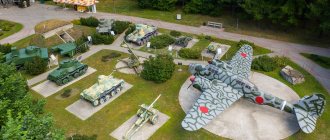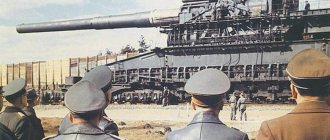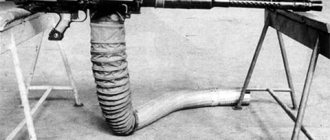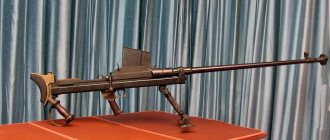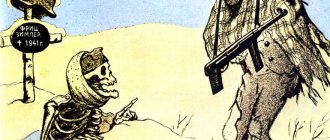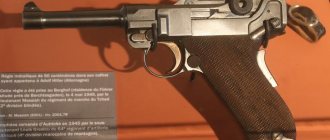Fighter
Fokker
The Fokker D.XXI is a single-engine, single-seat fighter, a cantilever low-wing aircraft of mixed design with a fixed landing gear and an enclosed cockpit. Developed under the direction of Jiri Schatzki at the Fokker plant, first flight on March 27, 1936. Operated in the Air Forces of the Netherlands, Finland and Denmark.
Design
. The basis of the fuselage was a truss welded from chrome-molybdenum steel pipes, closed in the front part with removable panels made of light alloy “Electon”, and in the rear part covered with canvas. The fuselage had a circular cross-section at the front and an elliptical cross-section at the rear. The pilot's cabin was located in the middle of the car, heated with hot air and completely covered with a transparent canopy made of triplex and plexiglass. To land the pilot, the middle section of the canopy opened along the longitudinal axis. and the left side hinged down. In an emergency, it could be reset completely. Behind the pilot's seat, the supporting fuselage truss was developed upward, forming an anti-crash frame.
The wing was trapezoidal in shape with rounded tips and had two box-shaped spars made of spruce (Oregon from Sny) and plywood ribs (some of them were of the caisson type). The sheathing of the toe was made of “elekton” and then of plywood impregnated with bakelite resin. The wing carried landing flaps and ailerons (steel frame covered with fabric), attached to the rear spar. There were flettners on the ailerons.
The plumage had a metal set and was entirely covered with canvas. The stabilizer was supported from below by struts and from above it was connected to the keel by braces. Trimmers were installed on the elevators, and flettners were installed on the rudder.
According to the technical specifications, the chassis of the main (“colonial”) version of the D XXI was non-retractable. The wheels were covered with teardrop-shaped fairings with a small step for the mechanic. The cantilever struts, also capped, had oil-pneumatic shock absorbers. They also developed a version with retractable landing gear (with hydraulic drive) - the struts folded towards the axis of the aircraft with the wheels placed in the wing niches. The tail wheel was not retracted in all cases. It had a mechanical connection with the steering wheel and was cushioned by a package of rubber plates. A drop-shaped fairing was provided for the wheel, but it was mounted only on one of the prototypes.
The D XXI could be equipped with almost any engine with power from 600 to 1100 hp. With. According to the assignment, an English air-cooled Bristol "Mercury" VI-S engine (645 hp) was assumed, but the designers worked on installing other modifications of the "Mercury" on the aircraft, the Bristol "Perseus" X and Wright R-1820 "Cyclone" coil-over engines. , Pratt Whitney “Twin Wasp Junior”, Hispano Suiza 14Н, as well as in-line V-shaped Rolls-Royce “Kestrel” IV and Hispano Suiza 12 Ycrs. These motors were supposed to rotate various two- and three-blade variable pitch propellers. The shift in the center of gravity for different engines was compensated by changing the capacity of the front (in front of the cabin) and rear (behind the cabin) gas tanks. An additional tank could be placed in the left wing. The project provided for the protection of all gas tanks.
We have prepared no less options for weapons. The “Colonial” D.XXI was supposed to carry one 7.92 mm FN-Browning machine gun in the fuselage (500 rounds of ammunition) and two of the same in the wing (300 rounds per barrel). In addition, there were at least six other schemes for placing two to four machine guns of 7.92 and 12.7 mm caliber on a fighter or combining them with 20 mm Madsen cannons. “Oerlikon”, “Hispano”, including the layout with the installation of a motor gun (on a Hispano Suiza 12Ycre engine). An even greater selection was provided in instruments, electrical and radio equipment.
A total of 139 aircraft were produced.
Characteristics of Fokker D.XXI-4
| Crew | 1 person |
| Dimensions | |
| Wingspan, m | 11,00 |
| Wing area, m² | 16,20 |
| Aircraft length, m | 8,20 |
| Aircraft height, m | 2,92 |
| Power point | |
| 2×PD Pratt Whitney R-1535 Twin Wasp Junior, power, hp. | 1×1050 |
| Weights and loads, kg: | |
| Empty plane | 1490 |
| Normal takeoff | 2050 |
| Flight data | |
| Maximum speed, km/h | 410 |
| Cruising speed, km/h | 334 |
| Practical range, km | 880 |
| Practical ceiling, m | 9300 |
Armament
. Two 7.69 mm M.36 machine guns in the front part of the fuselage with 500 rounds of ammunition per barrel and two wing M.36 machine guns with 300 rounds of ammunition per barrel.
| Photo | Description |
History of the Fokker Fo-121
Even before the end of his move to Germany, Fokker received an invitation to participate in a competition for a single-engine monoplane fighter. For this competition, Fokker presented his model Fokker D.XXI, which in Germany was called Fo-121. However, unlike the RI aircraft, the machine was equipped with a BMW-139 air-cooled engine with a power of 1550 hp. With. and retractable landing gear.
At the competition, the Fo-121 turned out to be head and shoulders above all its competitors, reaching a speed of 605 km/h at altitude. For comparison, the best of the fighters equipped with water-cooled engines, the Messerschmitt Bf.109, developed only 468 km/h at altitude. However, the car did not go into production, since the BMW-139 engine with which it was equipped was not serial, and it took time to put it into production. But the Luftwaffe did not want to wait and ordered a large series of aircraft from the Willy Messerschmitt company.
However, Fokker still produced individual aircraft with engines from Bavarian engine manufacturers, but sold them not to the German army, but to the Finnish one.
Fokker Fo-121
True, already when the war was going on, the production of BMW engines was still established, but, on the contrary, there was a certain shortage of liquid-cooled engines. Under these conditions, the Fokker company received a large order, and the aircraft went to the troops. But all this will happen in the future.
Aircraft modifications
- D.XXI-1
. With a 645-horsepower PD Bristol Mercury VI-S. Single-seat low-wing fighter, prototype; two were assembled for the Danish Air Force. - D.XXI-2
. 1937, with 760 hp. PD Bristol Mercury VIII. Option for the Dutch and Finnish Air Forces. - D.XXI (1938)
. With Soviet M-25 engine. Spanish version. - D.XXI (1939-40)
. With a 760-horsepower PD Bristol Mercury VIII. Danish licensed model, 10 built. Carried 20 mm Madsen underwing cannons. - D.XXI-3
. With a 760-horsepower PD Bristol Mercury VIII. Option with weapons in drop-shaped fairings, 38 units were built in 1939. for Finland. - D.XXI-E1
. With a 760-horsepower PD Bristol Mercury VIII. An experimental version with a pronounced narrowing of the wing towards the end. - D.XXI-4
. 1941 with a 1050-horsepower Pratt & Whitney R-1535 Twin Wasp Junior. 50 units were delivered, weapons were moved from the fuselage to the wing. - D.XXI-5
. 1944, with a 920-horsepower PD Bristol Pegasus X. The last batch of five Finnish cars.
Combat use and modifications
It was the Fo-124 aircraft that became the main escort fighters of the Luftwaffe. They successfully carried out this mission until the very end of the war. The main advantage of the car was its high speed and maneuverability. But she also had serious shortcomings. First of all, the pilots complained about the fighter’s insufficient armament. Over time, this drawback was eliminated by installing two additional machine guns in the wings.
Another disadvantage of these machines was their relatively short flight range. This drawback was eliminated by using suspended tanks.
Links[edit]
Quotes [edit]
- "D.XX1." Archived December 15, 2007
at the Wayback Machine
zap16.com
. Access date: June 20, 2010. - ^ abcdefghij Kamphuis 1966, p. 3.
- Kamphuis 1966, pp. 3-4.
- ^ abcdefgh Kamphuis 1966, p. 4.
- Kamphuis 1966, pp. 4, 6.
- ^ abcd Kamphuis 1966, p. 6.
- ^ abc Kamphuis 1966, p. 9.
- ^ abcdef Kamphuis 1966, p. 10.
- ^ abc Kamphuis 1966, p. 8.
- Kamphuis 1966, pp. 8-9.
- ^ a b Kamphuis 1966, p. 12.
- Bonnet, France. "Fokker D.XXI." Archived December 13, 2007,
on the Wayback Machine
WW2 Warbirds
. Received; June 20, 2010 - Salamander Books, Ltd. 1974. ISBN 0 690 00606 3.
- London, United Kingdom: Salamander Books, Ltd., 1988. ISBN 0-86288-672-4.
- Schröder, Hans (1991). "Royal Danish Air Force". Ed. Kay S. Nielsen. Tøjhusmuseet, 1991, pp. 1–64. ISBN 87-89022-24-6.
- ^ ab Heinonen, Timo (1992). Thulinista Hornetiin: 75 vuotta Suomen ilmavoimien lentokoneita
. Tikkakoski: Keski-Suomen Ilmailumuseo. ISBN 951-95688-2-4. - https://www.hoogeveenschecourant.nl/nieuws/hoogeveen/483656/fokker-d-21-wordt-de-grote-publiekstrekker.html
- https://www.facebook.com/FlyingFokkerD21/
- Raunio Jucca (1993). Lentäjän Näkökulma II
. Forssa: Jukka Raunio. ISBN 951-96866-0-6.
Bibliography[edit]
- De Jong, Peter. Le Fokker D.21 (Avions 9 Profile Collection)
(in French). Outreau, France: Éditions Lela Presse, 2005. ISBN 2-914017-26-X. - Eberspacher, Warren. Fokker D-XXI, Volume 1: Dutch and Danish Aircraft (No. 1 International Squadron Monograph)
. St. Paul, MN: Phalanx Publishing Co. Ltd., 1994. ISBN 1-883809-05-3. - Gerdessen, Fritz. Nederlandse Militaire Luchtvaartt VI: Fokker D-XXI (deel 2)
(in Dutch). Spijkenisse, Netherlands: Stichting Vrienden van het Militaire Luchtvaart Museum / Afdeling Luchtvaartkennis KNVvL, 1991. No ISBN. - Gerdessen, Fritz and Luuk Boerman. Fokker D.XXI: History, camouflage and markings - LVA/ML operations Fokker D.XXI (Dutch Profile 5)
(bilingual Dutch/English). Zwammerdam, The Netherlands: Dutch Decal, 2007. No ISBN. - Green, William. "D-XXI: Ancestor of the Alliance." RAF Flying Review
Vol. XVII, no. 12. - Green, William. "Four guns and a canopy." RAF Flying Review
, Vol. 19, no. 2. - Green, William. "Fokker" halfway." Air Enthusiast
, August 1971. - Green, William. "The last of the fighting Fokkers." RAF Flying Review
. - Heinonen, Timo. Thulinista Hornetiin - 75 vuotta Suomen ilmavoimien lentokoneita
(in Finnish). Tikkakoski, Keski-Suomi, Finland: Keski-Suomen ilmailumuseo, 1992, ISBN 951-95688-2-4. - Hooftman, Hugo. Fokker D-XXI (Encyclopedia Nederlandse Vliegtuig 5)
(in Dutch). Bennekom, Netherlands: Cockpit-Uitgeverij, 1978. - Kamphuis, G. H. Fokker D.XXI (Aircraft in Profile No. 63)
. Leatherhead, Surrey, UK: Profile Publications Ltd., 1966. - Keskinen, Kalevi, Kari Stenman, and Klaus Niska. Fokker D.XXI (Suomen Ilmavoimien Historia 3)
(in Finnish with English summary).
Espoo, Finland: Tietoteos, 1974 (2nd edition, 1977). ISBN 951-9035-15-X. The 4th improved edition is republished in two parts as: Keskinen, Kalevi and Kari Stenman. Fokker D.XXI [Mercury] (Suomen Ilmavoimien Historia 3a)
(in Finnish). Helsinki, Finland: Hobby Kustannus Oy, 2000. ISBN 952-5334-02-3. - Keskinen, Kalevi, and Kari Stenman. Fokker D.XXI [Wasp] (Suomen Ilmavoimien Historia 3b)
(in Finnish). Helsinki, Finland: Hobby Kustannus Oy, 2000. ISBN 952-5334-03-1.
(in Polish). Warsaw, Poland: Wydawnictwo Militaria, 1995. ISBN 83-86209-34-8.
(in Finnish). Forssa, Finland, 1993. ISBN 951-96866-0-6.
(in Polish, with summary in English). Wroclaw, Poland: Ace Publication, 1999. ISBN 83-86153-79-2.
. New York: Sons of G.P. Putnam, 1969. ISBN 0-425-03633-2.
, January 1982

